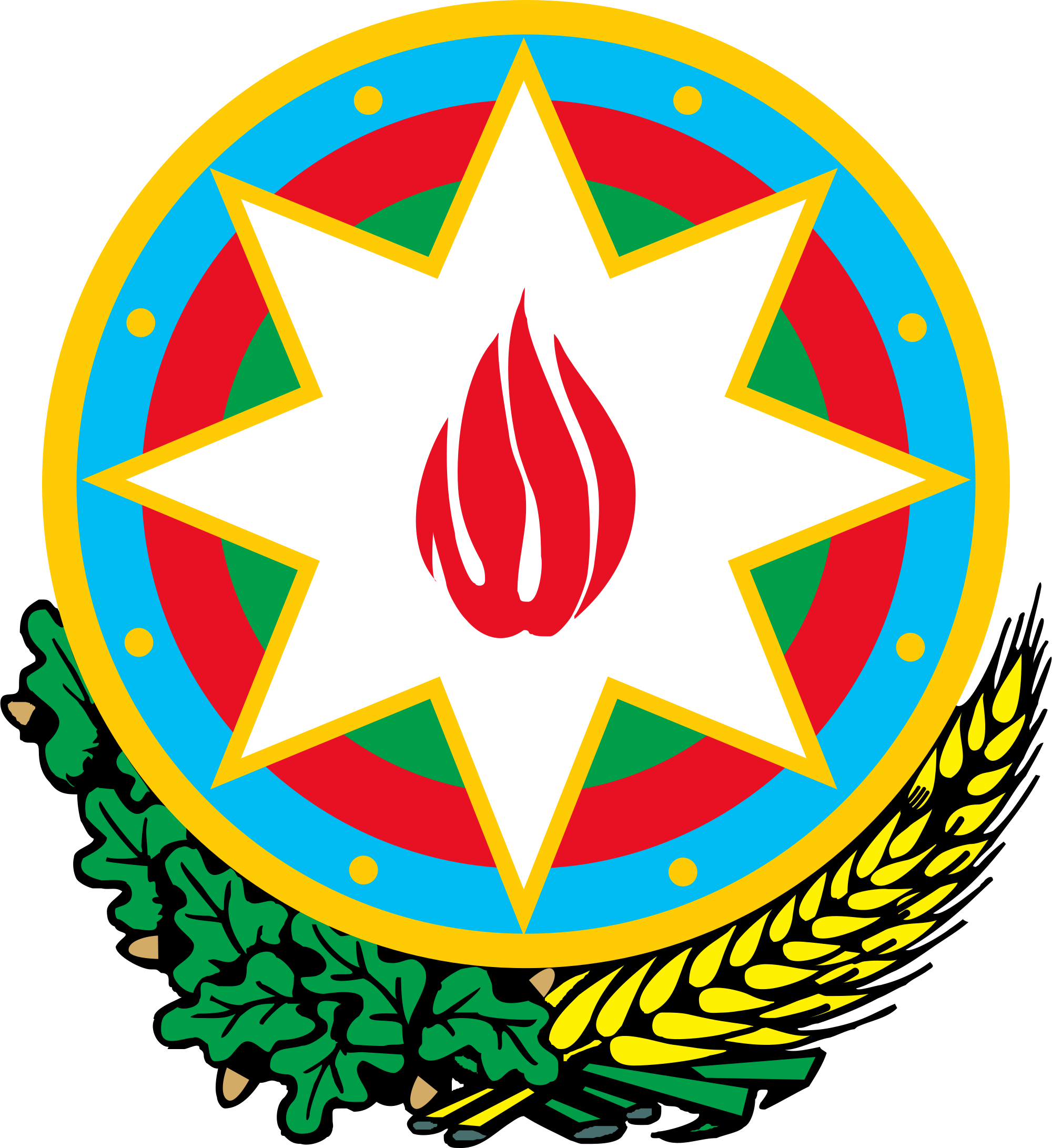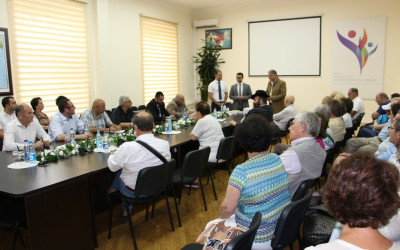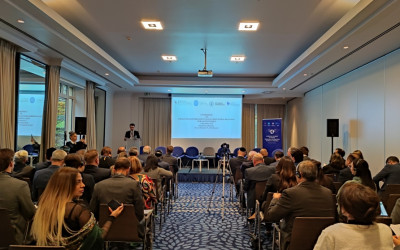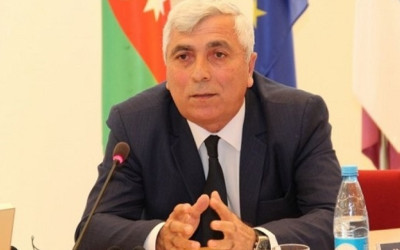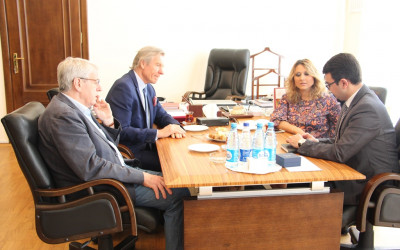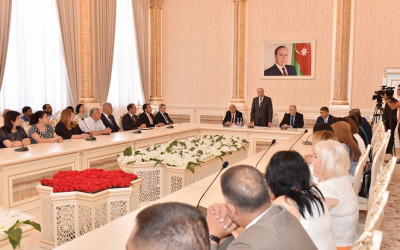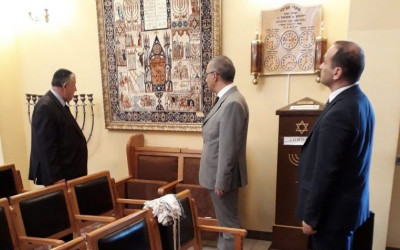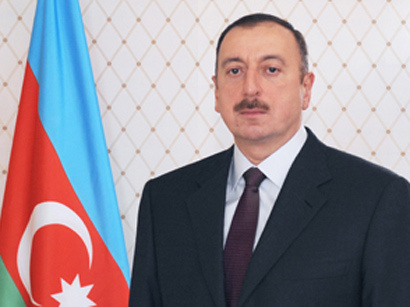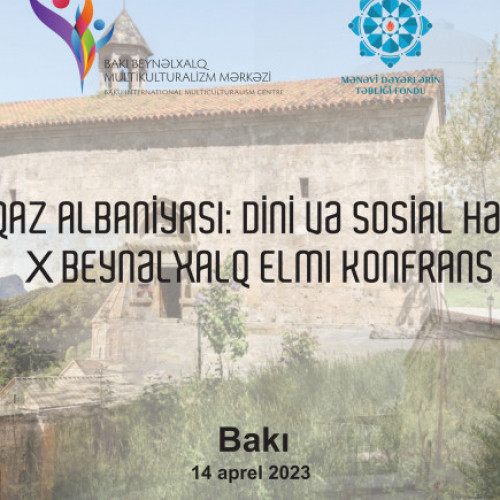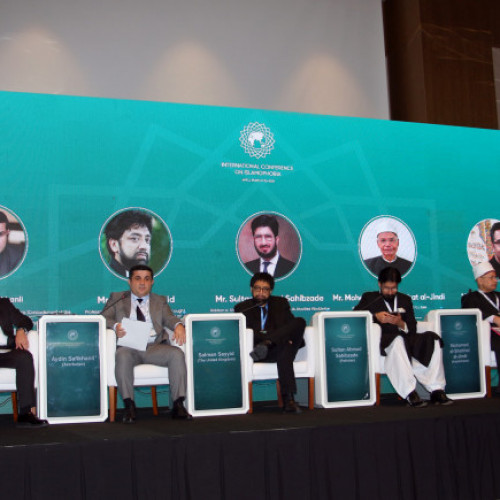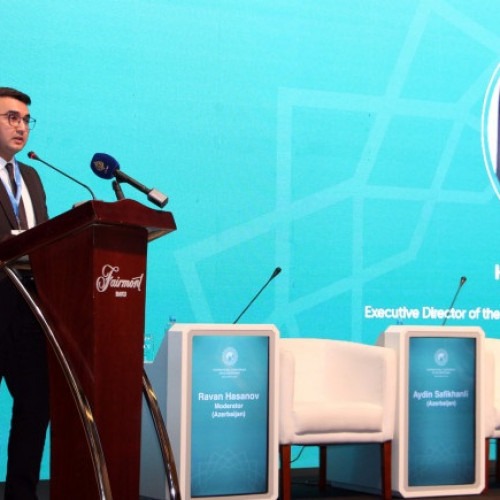The Presentation of the New Publications at Baku International Centre of Multiculturalism
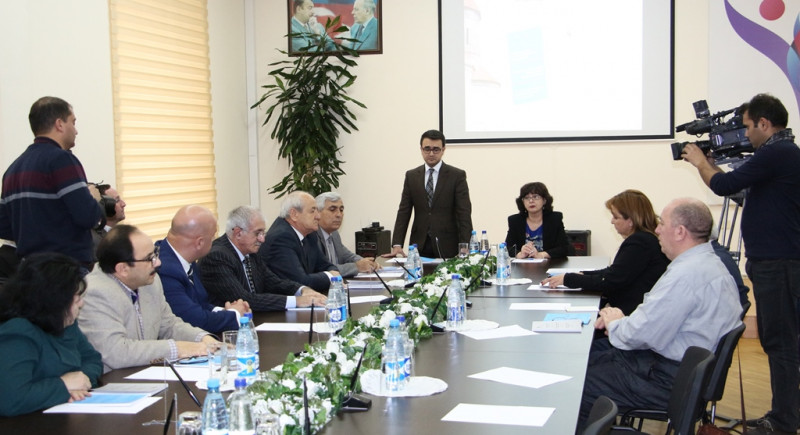

On 30 November there was a presentation of the publication “The Sixth Roundtable on ‘Albanian Apostolic Church: a Historical View’” at Baku International Centre of Multiculturalism.
The Acting Executive Director of Baku International Centre of Multiculturalism Ravan Hasanov spoke of the importance of “the roundtable”. He also spoke about the activities of the Centre in recent years and focused the attention to the fact that the above-mentioned event was also carried out at the initiative of the Centre.
The participants of “the roundtable” moderated by the senior consultant of the Department of Archival Documents in the Presidential Office of Affairs of the Republic of Azerbaijan, Doctor of Historical Sciences Hajar Verdiyeva emphasized the importance of the related new publications and their use in learning the history of our country.
First, Hajar Verdiyeva spoke of the activities of Baku International Centre of Multiculturalism. Further, she gave information on the Albanian Apostolic Autocephalous Church. It was underlined that the book “The Sixth Roundtable on ‘the Albanian Apostolic Church: a Historical View’” edited by Academician Kamal Abdulla throws light upon the realities of Azerbaijani history, and is of special importance in presenting our country’s multicultural values to the world community. The book as well as de facto and de juri restoration of the Albanian Apostolic Church constituting a part of Azerbaijani history block the attempts of the forces claiming from aside this legacy and, first of all, our country’s history. Speaking about the history of the Albanian Apostolic Church, the moderator said that this church was first patriarchal, autocephalous and later monophysite. The church was founded by apostles and governed by patriarchs. The original patriarchal history of the church is associated with the names of the apostles arriving from Jerusalem beginning from the I century A.D., first of all, Bartholomew, who came from India to Caucasian Albania and founded an Albanian church in Ordubad, as well as Eliseus, who was the disciple of the Apostle Thaddeus and founded the Kish church.
It was pointed out that the church which functions on the basis of the approved cannons of the Ancient Eastern churches had to suffer painful days as a result of the Sassanid-Byzantine and Sassanid-Arabic confrontations, and was subordinated to the Armenian-Gregorian Church from the hierarchical point of view as a result of the malice of the Armenian Gregorian Church and the confessional policy pursued in the region by the Arab Caliphate, which had drawn the Caucasus into its geographical frames. However, the Albanian Apostolic Church, which had been struggling for its lost position, restored its autocephaly in the first half of the XIII century and the Gandzasar monastery became the residence of the Albanian Apostolic Autocephalous Church. The Armenian Gregorian Church, which could not reconcile with the activities of the Albanian Apostolic Church, managed to enter the palace of the Romanovs’ Russia beginning from the late XVIII century with an intention to benefit from the directions of Russia’s Caucasian policy, and the Russian Empire, which invaded the northern territories of Azerbaijan in the first three decades of the XIX century, gave preference to “the Armenian card” and thus struck a blow on the historical memory of Azerbaijan by deciding to give the Albanian Church to the administration of the Armenian Gregorian Church.
The other speakers at “the roundtable” also mentioned the historical significance of the Albanian Apostolic Church. It was emphasized that in the first decades of the XIX century the Albanian Apostolic Church lived its tragic days. The 11 March 1836 Decree of the Russian Emperor Nikolai I laid favourable conditions for the realization of the claims of the Armenian Gregorian Church against the Albanian Apostolic Church, and the Armenian Gregorian Church, which took possession of the property of the Albanian Apostolic Church, taking the advantage of the situation, destroyed its archives, looking for an appropriate moment to realize its unfounded claims against the Azerbaijani territories, carried out regular activities in this direction beginning from the early XX century.
During the exchange of views on the speeches the historians noted that although part of the Udins were exposed to assimilations under the given circumstances in the first half of the XIX century, yet they refused to obey the Armenian-Gregorian Church, maintained their ethnic identity and were related to Azerbaijani history.
At “the roundtable” there was a presentation of one more book – “Albanian History, Ethnic and Cultural Boundaries: the Western Direction” by the head of department at the Archeology and Ethnography Institute of the National Academy of Sciences of Azerbaijan, PhD in History Mubariz Khalilov.
Запись The Presentation of the New Publications at Baku International Centre of Multiculturalism впервые появилась Baku International Multiculturalism Centre.

